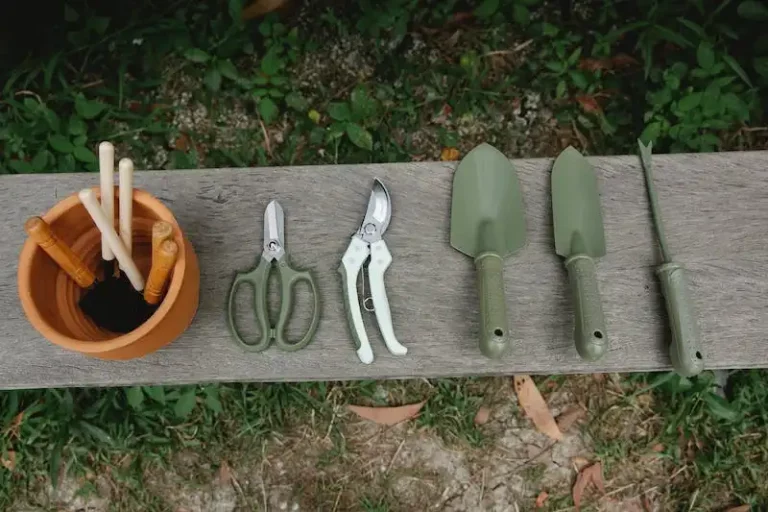When it comes to growing your own strawberries, there is no shortage of advice and tips available. Whether you are a seasoned gardener or new to the world of fruit cultivation, it is important to consider a few key factors that can make your strawberry plants thrive and produce a bountiful harvest.
One of the first things to consider is the type of strawberries you want to grow. There are two main types: June-bearers and everbearers. June-bearers produce most of their fruit in a relatively short period of time, typically over a 2-3 week period in June. Everbearers, on the other hand, produce fruit throughout the summer, although the individual harvests are usually smaller. Choosing the right variety will depend on your local climate and personal preferences.
Before planting your strawberries, it is important to prepare the beds well. Strawberries grow best in well-drained soil, so make sure to choose a site that doesn’t hold water. Adding organic matter or compost to the soil can also improve drainage and provide necessary nutrients for the plants.
When it comes to planting, strawberries can be grown either from bare-root plants or from runners. Bare-root plants are typically easier to handle and establish quickly, while runners are offspring plants that grow from the original mother plant. If you choose to plant from runners, make sure to remove any older or diseased plants before transplanting to ensure the best results.
One important tip for growing strawberries is to provide protection against pests and diseases. Strawberries are susceptible to a variety of insect pests and fungal diseases, so consider using pest-beating techniques like row covers or companion planting with pest-repellent plants like garlic or marigolds. Additionally, providing a well-drained site and spacing the plants properly can reduce the risk of excessive moisture, which can lead to disease.
Growing Strawberries in the Home Garden
Strawberries are a popular fruit to grow in home gardens, and for good reason. Not only do they yield delicious berries that can be enjoyed fresh or used to make preserves and desserts, but they are also relatively easy for beginners to grow. Whether you have a small plot or just a few containers on your patio, strawberries can be a great addition to your garden.
When it comes to choosing strawberry plants, there are a few different varieties to consider. The most common types are June-bearing strawberries, which produce one large harvest in late spring or early summer, and everbearing strawberries, which produce multiple smaller harvests throughout the growing season. Some popular June-bearing varieties include Cabot and Iowa, while Everest is a suggested everbearing variety.
Before planting, it’s important to choose the right site for your strawberries. They prefer full sun and well-drained soil, so pick a spot in your garden that gets at least six hours of direct sunlight each day. If the soil in your chosen location is heavy or clay-based, consider creating raised beds or using containers filled with a good-quality potting mix.
Once you have your site ready, it’s time to plant your strawberries. You can buy bare root or potted plants from a nursery or garden center, or you can propagate new plants from runners produced by existing strawberry plants. Space your plants about 12-18 inches apart, with rows spaced 2-3 feet apart. Make sure to water them well after planting and keep them consistently moist throughout the growing season.
As your strawberry plants grow, it’s important to maintain them. Regularly check for pests and diseases, and take action if necessary. Some common pests that affect strawberries include insects like aphids and slugs. To deter pests, you can use organic insecticides or plant companion flowers like marigolds and onions, which help repel insects.
To help your plants produce the best berries, it’s also important to fertilize them. A general-purpose fertilizer can be applied in early spring, just before the plants begin to flower. Following the suggested application rate on the fertilizer packaging, broadcast the fertilizer over the strawberry bed and water it in well. This will provide your plants with the nutrients they need for healthy growth and a bountiful harvest.
Typically, strawberries are ready for harvesting about 4-6 weeks after flowering. Look for berries that are fully red and slightly soft to the touch. Gently pull the berries from the plants, taking care not to damage the crown or surrounding foliage. Store your freshly picked strawberries in the refrigerator to help them last longer.
In conclusion, growing strawberries in your home garden can be a rewarding experience. With the right site, proper care, and a little bit of time and effort, you can enjoy the taste of fresh, homegrown strawberries. So why not give it a try and start growing your own strawberries today?
Planting Strawberries in the Home Garden
When it comes to planting strawberries in your home garden, there are several important factors to consider. Diseases can be a major concern, so it’s important to select disease-resistant varieties. Each strawberry plant should be given enough space to grow and thrive, with about 12 to 18 inches of space between each plant. Prior to planting, prepare the site by removing any weeds or grass and loosening the soil.
Strawberries are typically planted in the late summer or early fall to ensure they establish roots before winter sets in. Select a sunny location for your strawberry bed, as strawberries require at least six to eight hours of direct sunlight each day. The soil should be well-drained and rich in organic matter. Before planting, it’s recommended to test the soil’s pH and adjust it if needed. Strawberries prefer a slightly acidic soil with a pH ranging from 5.5 to 6.8.
When selecting strawberry plants, there are three main types to choose from – June-bearing, day-neutral, and everbearing. June-bearing varieties produce a single large crop of strawberries in late spring to early summer. Day-neutral varieties produce strawberries throughout the growing season, regardless of day length. Everbearing varieties produce two or three smaller harvests – one in late spring, one in early summer, and one in late summer to early fall.
Before planting, remove any older or damaged leaves from the strawberry crowns. This will help stimulate new growth and reduce the risk of disease. It’s also important to remove all flower buds from the strawberry plants in the first year of planting. This allows the plants to develop a strong root system and encourages future fruit production. Fertilizer can be applied at planting to promote healthy growth, but excessive fertilizer can cause vigorous foliage growth at the expense of fruit production.
After planting, strawberries may benefit from some form of protection to prevent damage from birds, excessive rain, or early frosts. This can be done through the use of bird netting, row covers, or straw mulch. Mulching around the plants will also help to conserve soil moisture and keep weeds at bay.
Throughout the growing season, strawberries should be regularly watered, especially during dry periods. Watering should be done at the base of the plants to avoid wetting the foliage, which can lead to disease. Weeds should be removed as they appear to reduce competition for nutrients and sunlight.
When it comes to harvesting strawberries, it’s best to wait until the fruit is fully ripe before picking. This will ensure the best flavor and results. Typically, strawberries are ready to be harvested when they turn red and are easily plucked from the stem. Be sure to check the plants frequently, as strawberries can ripen quickly. Harvesting should be done in the morning when the fruit is cool and before the birds or other animals have a chance to feast on them.
After harvesting, the strawberry beds can be cleaned up by removing any old or diseased foliage. This will help prevent the spread of disease and prepare the plants for winter dormancy. Depending on your climate, strawberry plants may need to be protected during the winter months to ensure their survival. This can be done by providing a layer of straw mulch or covering the plants with row covers.
In conclusion, planting strawberries in the home garden can be a rewarding experience. With the right variety selection, proper soil preparation, and diligent care and cultivation, you can enjoy a bountiful yield of delicious strawberries throughout the growing season. Remember to follow the best advice from experienced gardeners and consult reliable sources for further guidance on strawberry planting and care.
Growing Strawberries
Growing strawberries in your home garden can be a rewarding and delicious experience. With a few simple tips, you can have a productive strawberry patch that provides you with fresh berries.
When it comes to planting strawberries, it’s important to choose a well-drained site that receives at least six hours of sunlight a day. Depending on the variety, strawberries can be planted in the fall or early spring. Before planting, prepare the soil by removing any weeds and adding compost or fertilizer. Strawberry plants should be spaced approximately 12-18 inches apart in rows, with rows spaced 3-4 feet apart.
There are different types of strawberries available, including June-bearing, day-neutral, and everbearing varieties. June-bearing strawberries produce a large crop in early summer, while day-neutral strawberries produce smaller crops throughout the growing season. Everbearing strawberries produce two main crops, one in early summer and another in late summer or fall.
Once your strawberries are planted, it’s important to take care of them to ensure their health and productivity. Water your plants regularly, especially during dry periods, and be careful not to overwater, as this can lead to root rot. Mulching around the plants with straw or pine needles can help conserve moisture and prevent weeds.
Strawberry plants produce runners, which are long stems that grow out from the main plant and develop into new plants. If you want to expand your strawberry patch, you can train these runners to root and form new plants. Simply peg the runners into the soil in front of the mother plant and wait for them to take root. Once rooted, they can be transplanted to a new location.
When it comes to pests, birds can be a problem for strawberry growers. To protect your berries from birds, you can cover the plants with netting or use scare devices such as reflective tape or scarecrows. Additionally, keep an eye out for insect pests such as aphids or slugs, and address them as needed using organic or verified insect control products.
Strawberries typically start to flower and produce fruit in early-mid spring, depending on the variety. As the berries ripen, they will change color and become sweet and delicious. Harvest the berries when they are fully red and have a glossy appearance. Avoid picking berries when they’re still white or green, as they won’t ripen once picked.
After harvesting, strawberries can be stored in the refrigerator for a few days. If you have an excess of strawberries, they can be frozen for later use in smoothies, jams, or desserts.
In conclusion, growing strawberries in your home garden can yield delicious and fresh berries. By following these tips and maintaining a healthy garden, you can enjoy the sweet taste of strawberries all season long.




